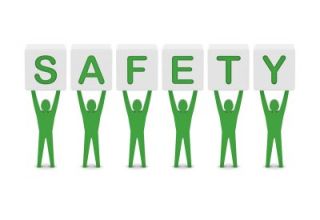
One commonly used and effective tool to help prevent suicide is a safety plan, also sometimes referred to as a crisis response plan. A safety plan is a written list of coping strategies and sources of support that can be used before or during a mental health crisis in which there may be suicidal thoughts or behaviors.

Safety plans have been used in clinical practice for some time. Although there are some minor variations in their content and format, a safety plan typically has six components:
A list or description of thoughts, feelings, symptoms, or behaviors that may occur when you are becoming distressed or about to have a crisis. Recognizing that these signs are occurring is also a signal to begin using the safety plan.
Things you can try to help calm you and reduce your distress if you begin to feel suicidal. These strategies could include relaxation, physical activity, taking a shower, etc. It’s important to consider how available these strategies are and how likely it is that you can use them, as well as dealing with possible barriers to their use.
Safe social settings you can go to (coffee shops, gyms, etc.) that can distract you from suicidal thoughts and feelings and help you take your mind off your problems. It’s recommended to list at least a few options in case the first one isn’t readily available.
A list of some family members and friends you can contact when you are distressed or suicidal. When you contact them, let them know you are in crisis. It’s vital to let them know in advance that you are including them in your safety plan and make sure they are willing to assist you.
A list of mental health professionals and other health care providers available to assist you during a time of crisis. Suicide prevention and mental health hotline numbers can also be included here.
Consider available means of harming yourself and develop a plan to limit access to these means. This might include locking up guns and giving the key to a trusted friend or disposing of potentially lethal medications that you no longer use.
After you have developed your plan, then the key step is to use it whenever you are becoming distressed or starting to feel suicidal. Another key takeaway is to remember that a safety plan has limits. If you feel suicidal to the extent you don’t feel in control of your behavior, seek professional help immediately. Options typically include contacting a mental health professional you are already working with, going to a local hospital emergency department, calling a local mental health crisis hotline, or calling 988 to access the Suicide and Crisis Lifeline.
There are several online templates and helpful guides for developing a safety plan. While you can fill one out on your own, it’s recommended that you seek the support of a mental health professional or other health care provider to assist you in completing your safety plan. And if you are a health care professional, it’s essential for you to know how to competently assist someone in developing a safety plan.
THE BASICSWhile you can write your safety plan on paper, there are also apps available for safety planning. Many of these are simple and easy to use, and some of them are free. You simply enter and save your personal information for each section, and you then have your own safety plan conveniently stored in your phone for future use. You can also modify or update your plan at any time.
I hope you will take the time to learn more about safety plans and develop one as a proactive strategy for managing a mental health crisis that may arise in the future. They can truly be a lifesaver!
Copyright David Susman 2023
If you or someone you love is contemplating suicide, seek help immediately. For help 24/7, dial 988 for the National Suicide Prevention Lifeline, or reach out to the Crisis Text Line by texting TALK to 741741. To find a therapist near you, visit the Psychology Today Therapy Directory.